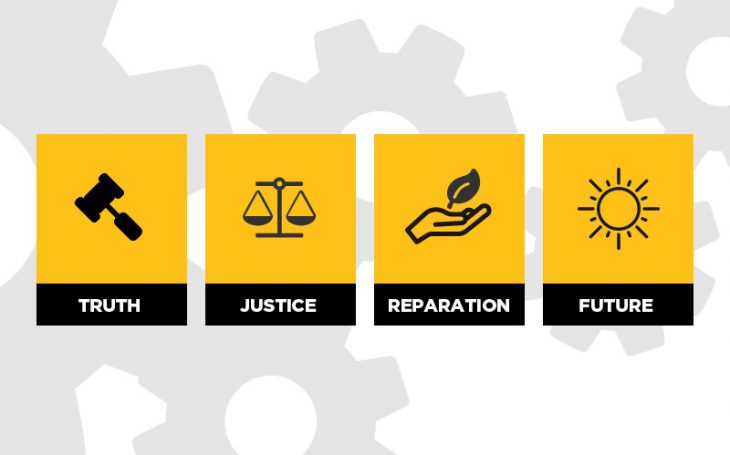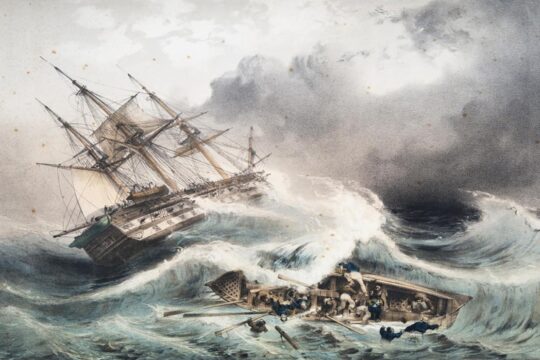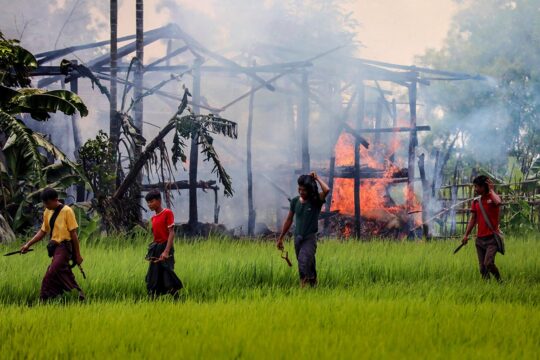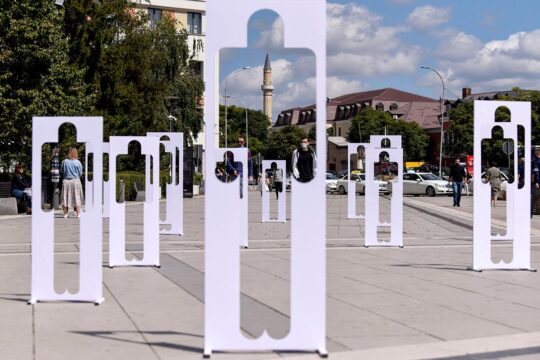Since this infographic dates back to 2016, we have more recently (2021) published a new "Transitional Justice" section containing 4 short instructional videos as well as our own definition and recommended articles.
Just below the infographic, you can find the, enriched text version. It supplements the information contained in the image, for those who wish to know more.

REPUBLISH THIS INFOGRAPHIC FOR FREE
Feel free to share this infographic or share it on your social networks and blogs. It is published in Creative Commons so it is free of rights (as long as you cite the source with a link). Click on the yellow "REPUBLISH" button at the top or bottom of this article.
Definition
In countries that are in transition (emerging from an armed conflict, civil war or authoritarian regime), transitional justice* uses a range of judicial and non-judicial mechanisms to confront, understand and provide reparation for past human rights abuses.
These mechanisms (criminal prosecutions, Truth Commissions, programmes of reparations for victims, remembrance and various forms of institutional reform) are based on both domestic and international law, and place victims at the heart of the process.
Thus by promoting justice, recognition and reparation of victims and encouraging commemoration of past violations, divided societies can rebuild on the basis of rule of law, democracy and respect for individual and collective rights.
Transitional justice is an element at a turning point in the history of a country, part of a process of political transition." [Louis Joinet]
[Sources : Wikipédia, ICTJ and Justice Info]
The transitional justice process
THE 4 PILLARS
After a conflict, a civil war or a regime change, 4 pillars of transitional justice (Louis Joinet is the French jurist who defined them) may be deployed:
- Truth seeking
- The right to justice
- Establishing reparations for victims
- Guarantees of non-repetition in a reformed future
Transitional justice is also taking more and more account of economic, social and cultural rights.
OBJECTIVE: PEACE AND DEMOCRACY
Achieving lasting peace between communities and establishing or re-establishing democracy.
THE PRIORITY: RESPECT FOR HUMAN RIGHTS
A little history
1945: NUREMBERG AND TOKYO TRIBUNALS, AT THE ORIGIN
Today’s concept of transitional justice is linked to development of the laws of war and of international criminal justice, notably the Tokyo and Nuremberg trials in 1945 of crimes committed during the Second World War.
80-90: NEW IDEAS - IN CENTRAL EUROPE, LATIN AMERICA AND SOUTH AFRICA
In the late 1980s and early 1990s, numerous authoritarian governments (the communist regimes in central and eastern Europe, military juntas in Latin America, the apartheid regime in South Africa) gave way to democratic rule as part of a negotiated transition. In all these countries scarred by human rights violations, the question of how to deal with the past was a pressing concern.
It was in this context of societies in transition that the mechanisms of transitional justice were formalized (Truth Commissions, trials, reparations, reform), to provide a bridge between oppressive regimes and budding democracies.
The ideas behind this approach were then set out in various United Nations documents, notably a 2004 report by UN Secretary General Kofi Annan on the rule of law and transitional justice in conflict and post-conflict societies (S/2004/616).
3 examples
FORMER YUGOSLAVIA AND RWANDA: THE FIRST GENERATION OF INTERNATIONAL CRIMINAL TRIBUNALS
In 1993, under pressure from public opinion and NGOs, the UN Security Council created the International Criminal Tribunal for the former Yugoslavia (ICTY), hoping to thus prevent further war crimes and crimes against humanity, and also punish those responsible for the ethnic cleansing policies that were carried out (deportation of populations, imprisonment in camps, murders, destruction of religious sites). The success of the ICTY during the years of war in Bosnia Herzegovina (1992-1995) is very limited, especially given the Srebrenica massacres in 1995. But a decisive new impetus had nevertheless been generated in the fight against impunity.
In 1994 the UN set up a second international court, the International Criminal Tribunal for Rwanda (ICTR), to bring to justice those most responsible for the 1994 genocide in which 800,000 Tutsis were killed by the regime and extremist Hutu militia known as Interahamwe.
For more information : « Rwanda Tribunal shows “Impunity is not an option” »
TUNISIA: AFTER DICTATORSHIP, A TRUTH AND DIGNITY COMMISSION
Under the authoritarian regime of Ben Ali,the judicial system followed the dictator’s orders while there was widespread corruption and nepotism benefitting those close to the President.
After weeks of demonstrations in 2010 and 2011, President Ben Ali stepped down and went into exile in Saudi Arabia. In June 2014, the Truth and Dignity Commission was created.
The Commission is tasked with shedding light on human rights violations and economic crimes from July 1, 1955 up to December 24, 2013, but it faces numerous political problems, notably with regard to economic crimes.
For more information : « Is Tunisia ready to listen to victims? »
Focus on the International Criminal Court (ICC)
In 2016 :
- 23 cases
- 27 suspects
- 9 summons to appear
- 4 verdicts
- 3 individuals convicted
The Court is part of a global struggle that aims to end impunity, and is engaged via international justice in holding the perpetrators of crimes to account and preventing these crimes from continuing to be committed. As a court of last resort, its mandate is to complement national courts and not to replace them. The ICC is governed by an international treaty known as the Statute of Rome, and is the first permanent international criminal court. To date, the Court has been seized of 23 situations, of which several involve more than one suspect.
The ICC judges have issued 29 arrest warrants. Thanks to the cooperation of States, 8 people have been arrested, brought to the ICC prison in The Hague and have appeared before the Court. 13 people are still at large. Charges against 3 people have been dropped following their deaths.
The judges have handed down 4 verdicts: 3 people were found guilty and 1 person was acquitted.
[Source : ICC]
What the experts say
Ignorance has never freed anyone from the chains of the past, but knowledge has." [Pierre Hazan]
Since the 1980s, dozens of Truth Commissions have been set up. Some have done remarkable work, while others have produced little truth. It is the men and women who work in them that make the difference, showing whether – or not – they are able to fulfil their mandate and the expectations of the people.
I like this quote from Antjie Krog, who was a member of the South African Truth and Reconciliation Commission: « The word "truth" makes me uncomfortable. The word "truth" still tips the tongue. I hesitate at the word. I am not used to using it. Even when I type it, it ends up as either "turth" or "trth". The moment the lie rases its head I smell blood. Because it is here where the truth is closest. ».
Ignorance has never freed anyone from the chains of the past, but knowledge has, yes.
People often talk of justice versus peace, but there has never been lasting peace without justice, nor justice without peace" [François Sergent]
Debates and issues in transitional justice
In societies in conflict or post-conflict situations, transitional justice is almost always a subject of intense debate: are the search for justice and for peace compatible? How much should perpetrators of human rights violations be punished? Who is entitled to reparations? Isn’t transitional justice used by one side at the expense of the other?
These debates are recurrent, and that is good. The most important thing in the transitional justice process is the quality of debate within society. It is this debate on the ethical and political considerations, on the past and on the future, which are the guarantee of the democracy that is being built after years of violence.
* Sometimes called “justice of transition” or “justice in transition”, the term “transitional justice” appeared for the first time in 1992, penned by New York jurist Ruti Teitel. The term transitional justice is often abbreviated to TJ (or JT in French).






